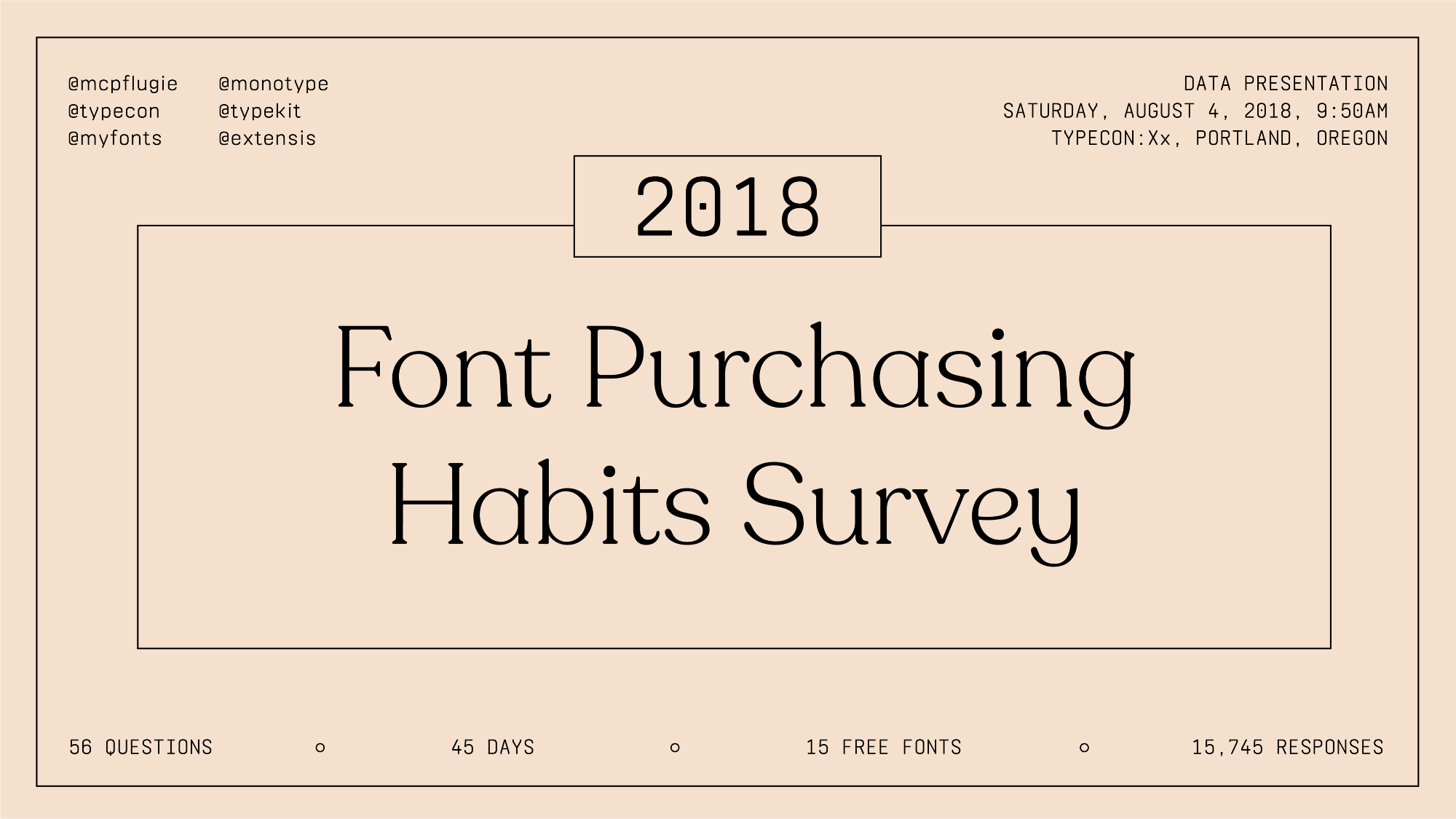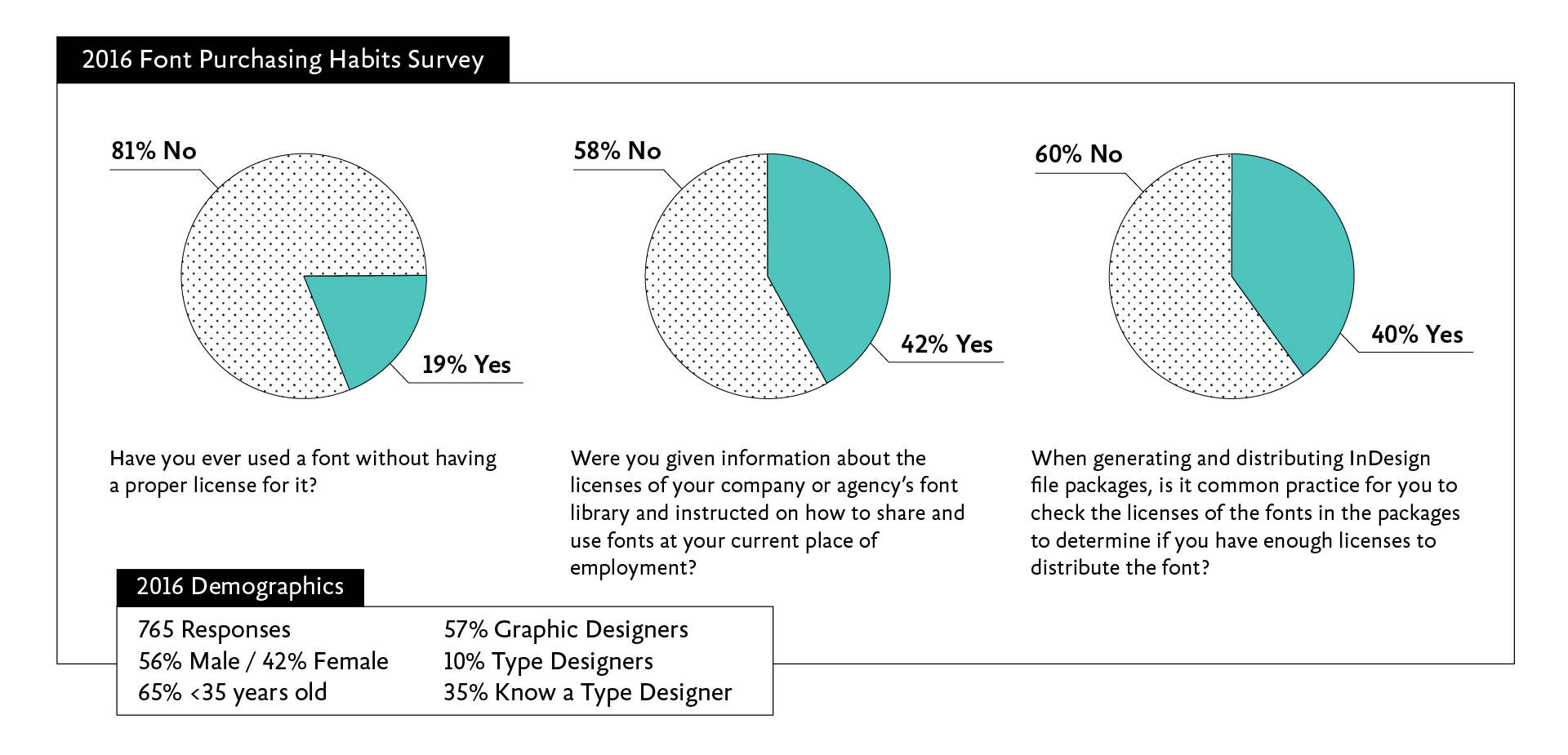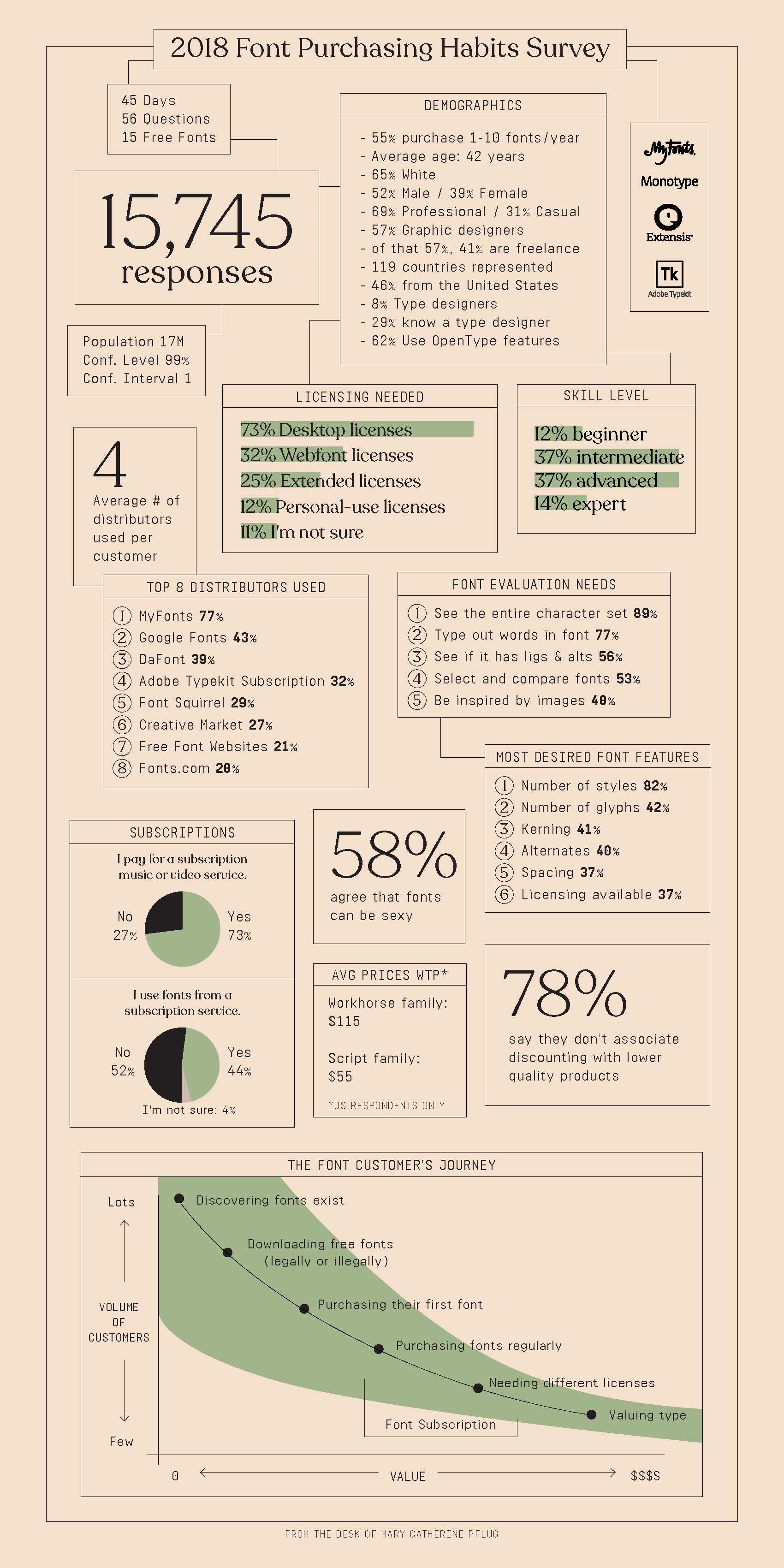Control the chaos and unleash your team's potential with Extensis Connect / Learn More
Control the chaos and unleash your team's potential with Extensis Connect / Learn More

 Extensis was excited to be a sponsor of Monotype’s 2018 Font Purchasing Habits Survey, which examined trends in font preferences and purchasing habits. Earlier this year, the author of this survey, Mary Catherine Pflug of MyFonts (a font foundry of Monotype) stopped by the Extensis Portland office to share the results. This survey gathered 15,745 responses from creative professionals all over the world. Thanks so much to our customers that participated!
Extensis was excited to be a sponsor of Monotype’s 2018 Font Purchasing Habits Survey, which examined trends in font preferences and purchasing habits. Earlier this year, the author of this survey, Mary Catherine Pflug of MyFonts (a font foundry of Monotype) stopped by the Extensis Portland office to share the results. This survey gathered 15,745 responses from creative professionals all over the world. Thanks so much to our customers that participated!
While Mary Catherine was here, we asked her some questions about the survey, the results, and other interesting findings. This is the second of 2 blogs detailing her customer insights from the survey.
6. The conclusion of your segmentation analysis calls for Type Education and Font Awareness. In your mind, what is the difference? And if you had the time and resources, what programs would you create to support both of these agendas?
Type education and font awareness are very different. Type education relates to people who already consciously know fonts exist. Type education means helping those people increase their understanding of font technology, licensing and font use. This can be done actively or passively. Active type education is when someone is looking for more information about type, and they find educational typography resources online, classes, workshops, how-tos, terminology pages, etc. Passive type education is the key to educating customers on a larger scale, by being able to reach people who aren’t actively looking for type educational resources. If someone is out there looking for type resources, they will find them. We can successfully create more educated type users and buyers in integrated ways, for example, while people are browsing websites for inspiration or evaluating type to purchase or download.
Font awareness is all about reaching people who don’t consciously think about fonts as something that can be downloaded and used as a valuable tool. Font awareness includes any and all efforts to get people into the evaluation and purchase path so that they can become educated.
Both type education and font awareness can result in joy from users. I have seen it happen - when someone discovers OpenType features in script fonts that take their designs to new levels, or when someone realizes there is a “Glyphs” panel in Illustrator and they have access to all the characters they didn’t realize they had! Helping someone become aware of fonts is always entertaining; I start by explaining that I work for a company that makes and sells fonts - yes, those things in the drop down menu in Microsoft Word. Next, I name drop font names like Times New Roman and Helvetica that they are familiar with (usually from school). Sometimes I can even help people imagine a human being working with software to not only design the letters but to also code the font to ensure that it works in the computer. Depending on the person, telling people that fonts are intellectual property and you can earn royalties from them seems to do the trick. People’s minds open up and you can see on their face that a new part of the world has been revealed to them. I believe that, deep down, most people love to learn new things.
If I had my way, I’d have super basic phrases like “YOU CAN BUY FONTS”, “FONTS EXIST”, “FONTS ARE COOL”, “FONTS ARE MADE BY HUMANS” in interesting typefaces plastered across billboards and public transport systems across the country. For now, I’ll stick to just spreading the good word about fonts, one person at a time.
7. Font piracy is likely a much larger issue than your survey indicates. When asked where the budget comes from, only 4% suggest they don’t pay for fonts. Given your industry knowledge, is that proportion accurate? And what industry measures are currently in play to reduce font piracy?
Definitely the 4% is certainly much lower than reality. I was actually thrilled that 4% even admitted it! Questions like this really show the issues with self-reporting. It is worth noting that most people taking this survey are more educated about fonts than the general population. This being said, I was very happy with the cross-section of demographic groups represented here.
In my first survey in 2016, I included a section called Licensing Misuse. There were three questions, and you can see the results in the graphic below:

These questions asked people more directly about font piracy, and here underreporting definitely occurred. After the 2016 survey, it was clear that there was no way I would be able to use a survey to understand the full depth of font piracy, so I removed these questions and replaced them with other more helpful and actionable questions about other topics.
8. Given this is the 3rd year this survey has been fielded, what trend has emerged from the data that is top-of-mind for you at MyFonts and Monotype?
This year, we are investing more money and engineering resources into MyFonts in our endeavor to create the best experience for customers. The survey results showing a) how customers evaluate fonts and b) the font features customers want are directly impacting the decisions we are making in our product page and checkout redesigns.
In general, understanding customers is the foundation of any business. Our customers are font users, and understanding them as best as possible is important for all aspects of our business. Helping people understand font customers in all departments at Monotype - from sales to engineering, product teams to type designers, branding to marketing - is top of mind for me and will help our business grow in meaningful ways that are also good for the industry at large.

Can’t agree with you more on that point, Mary Catherine. Thank you for your time and responses to our questions.
As part of our partnership with Monotype, Suitcase Fusion and Suitcase TeamSync directly connect with MyFonts by Monotype. Designers can buy fonts and activate them automatically in Suitcase Fusion and Suitcase TeamSync--allowing you to stop looking for fonts and start creating!
 Darrin Helsel – Sr. Customer Insights Manager
Darrin Helsel – Sr. Customer Insights Manager
Darrin Helsel has been working in market research, in service to the technology industry, for over 15 years. As Sr. Customer Insights Manager for Extensis, his mission is to leverage his expertise to collect and channel customer insights in support of customers getting more from their digital assets, fonts and images. When he's not asking questions or analyzing data, he and his family are exploring all that the great Pacific Northwest has to offer, either on bicycle or motorcycle. And during the wet months, as a self-reported comics geek, you may find him home reading or in the movie theater consuming the latest installment of the Marvel Cinematic Universe.